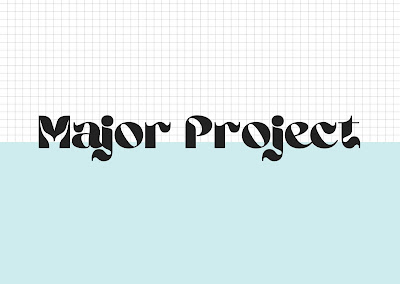Design Research Methodology: Critical Review
26.04.2021 - 16.05.2021 (Week #5 - Week #8)
Seerat Tayyab Mukhtar Qureshi - 0345576 (BDCM)
Design Research Methodology
Critical Review
1. Lectures:
Week #5: This week we were introduced to what a critical review is and how it will benefit our research.
It is a type of critical writing that requires us to evaluate some aspects of a literary text or artwork, a research article or an argument or interpretation of an issue, text or artwork.
By looking at the strengths and weaknesses of an article's ideas and content we are provided with description, analysis and interpretation that allow readers to assess the article's value. We can also gain an understanding of research articles and their structure by reviewing them critically. To be able to express opinion or evaluation we need to break down and study the various parts of an article.
We need to look for proper research articles that are relevant to our research and then study it by looking at different aspects of it.
Fig 1.1: From lecture slides
Fig 1.2: Lecture slides
Week #6:
This week our lecture was on the two different types of research, qualitative and quantitative. Quantitative research is mainly numbers, charts, demographics etc. It is useful for collecting and documenting large quantities of information. It is good for backing up statistical or factual claims and can be both primary and secondary. The downside is that you can't get too much detail in regards to people's opinions, thoughts and feelings.
On the other hand, qualitative research studies more into the personal opinions of people and gives us small portions of high-quality detail on topics, as opposed to large quantities of statistical information. Qualitative research offers more useful information when understanding your target audiences and client needs.
They both can be primary (research you have gone out and done yourself) and secondary (research that has been conducted by others).
Fig 1.3: Lecture slides
Week #7:
This week's lecture was about primary data collection for creative media researchers. There are a lot of differences between qualitative and quantitative research and it's important for us to know these differences so we can decide on which method is best for us.
Fig 1.4: From lecture slides
There are several ways to conduct primary research. Examples include; interviews, surveys, questionnaires, focus groups and visits to competitor locations. These can be conducted both offline and online and each has its pros and cons.
Fig 1.5: From lecture slides
Collecting data using:
1. Questionnaires: A questionnaire is a general term to include all methods of data collection in which each person is asked to respond to the same set of questions in a predetermined order.
2. Interviews: Interviews are used to collect data from a small group of subjects on a broad range of topics. You can use structured or unstructured interviews. Structured interviews are comparable to a questionnaire, with the same questions in the same order for each subject and with multiple choice answers.
3. Focus groups: Data is collected through a semi-structured group interview process. Focus groups are moderated by a group leader. Focus groups are generally used to collect data on a specific topic.
4. Observational Studies: In general, observation is a systematic way to collect data by observing people in natural situations or settings. In creative media, an observational study may involve, watching video, animation, film and others.
Fig 1.6: Lecture slides
2. Instructions:
Module Information Booklet
3. Critical review
I picked out five research articles related to graphic design or activism and wrote a critical review on each
Fig 1.7: Final Critical Review PDF
4. Feedback:
Week #5: Dr Jinchi said that all my research articles were good and related to my research and I can proceed with my first 2 critical reviews. She also mentioned I can look and see if I can find any articles on the suitability of visuals because that could be useful. Other than that all my articles were appropriate and now I have to find one more about the Vietnam war because I had accidentally picked ou a thesis instead of an article.
Week #6: There is no need to quote or cite pages from the article, it's to prevent you from repeating what the article says, rather simplify what the article says. I need to explain the consequences (good or bad) of the points I make. I should also have clear reasons behind why have you chosen to critique that part.
Week #7: Dr Jinchi went through my third review and left me comments on how to improve. I need to work on explaining some of the points I make. I need to say whether it is a strength or weakness rather than just stating what the article is doing
5. Reflection:
Week #5: I'm glad Dr Jinchi approved three of my articles, however, I do feel a bit upset that I spent my time searching and reading through dissertations rather than journal articles. Nevertheless, I can focus on three for now and continue searching for two other suitable articles.
Week #6: Dr Jinchi said I was on the right track and getting a hang of the assignment with my first review. I feel more confident in my writing and this assignment now. I was a bit nervous at first when starting to write these reviews because I have never written a critique like this before.
Week #7: I am feeling quite comfortable with writing critical reviews. I am also learning a lot with each article I analyse such as what I should avoid when I start writing my own dissertation and what elements add clarity and precision to my articles.







Comments
Post a Comment